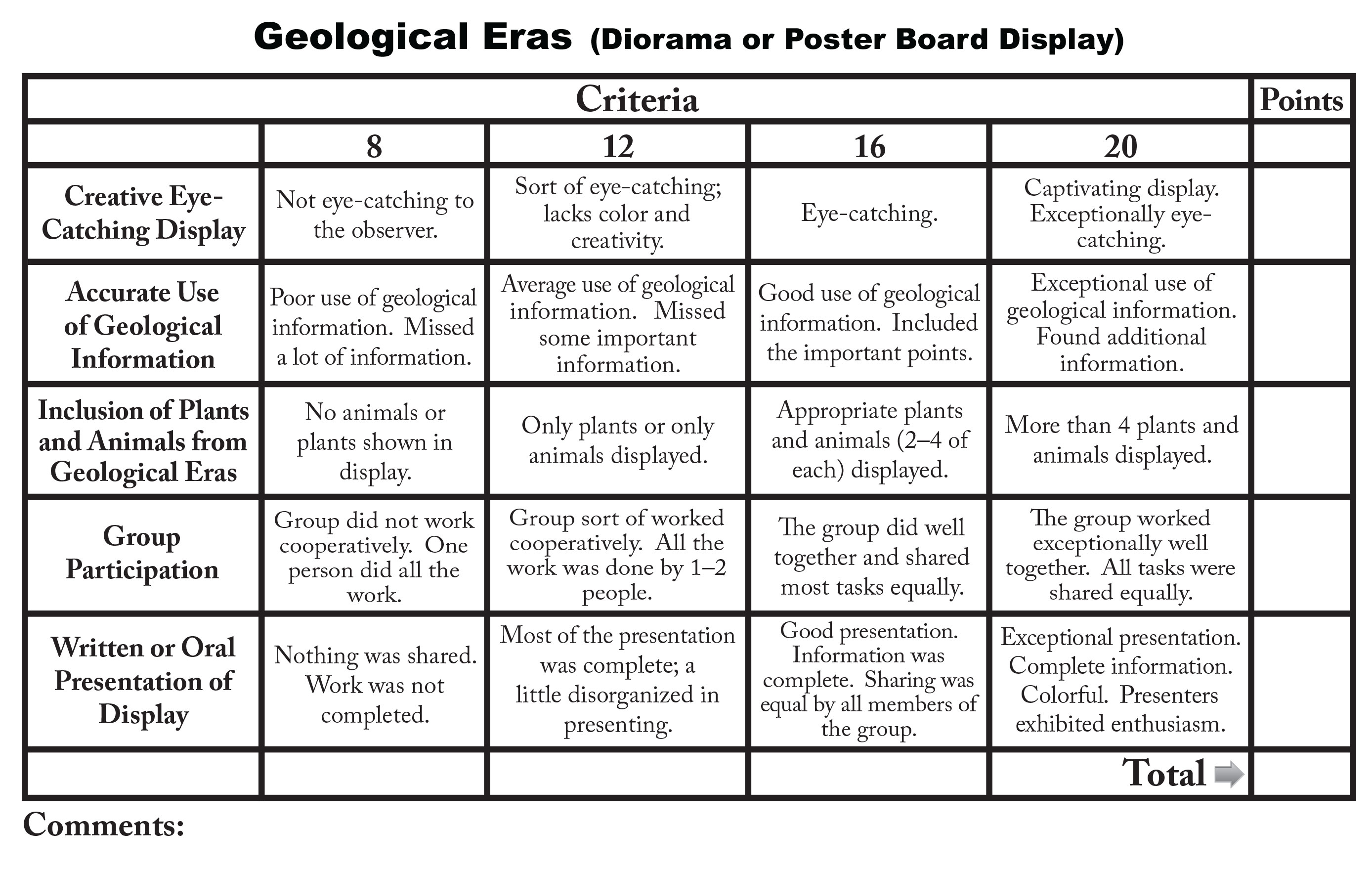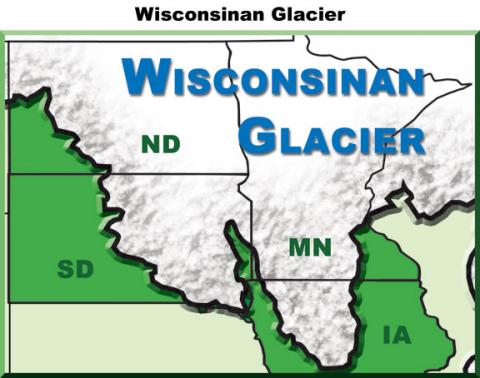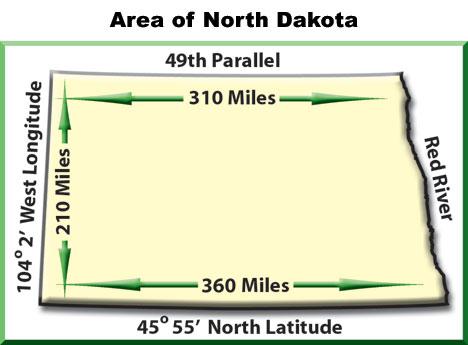Resources
Textbook
Geology, Geography, and Climate contains 116 pages. Students are introduced to the major geological eras, the three regions of North Dakota, as well as the weather and climate of the state.
Teacher Resource Guide
The purpose of this Teacher Resource Guide is to assist the teacher in teaching about Geology, Geography, and Climate. It is intended to be interdisciplinary and to act as a guide to supplement other activities that may be used in the classroom.
Review and discussion questions, vocabulary, and additional activities are included and available in print and CD-ROM versions of the Teacher Resource Guide.
Books
Students can write and illustrate a children’s book on anything related to North Dakota geology. Share the books with students in kindergarten through third grade after sharing them with classmates.
Children's Literature Checklist
Dinosaur Activities
Have students list the dinosaurs from the “Age of Reptiles.”
Find pictures of dinosaurs from the Mesozoic Era and cut them in half. Give the students only one half of the picture and have them draw the other half any way they desire. When completed, have them give it a name and then write a descriptive paragraph about their newly created dinosaur.
Have students pantomime or act out various kinds of dinosaurs and have other students guess what kind of dinosaur is being portrayed.
Diorama
Have students create a diorama (a shoe box placed flat or on its side is used, along with any materials the students may have) or a poster board depicting one of the four geologic eras from the geologic time table. This can be an individual, partner, or small-group project.
Field Trips
Take field trips to the Dinosaur Museum in Dickinson, the state Capitol grounds to view the petrified wood, the Heritage Center for paleontology, or one of the coal mines in North Dakota to learn first-hand how lignite coal is mined in North Dakota.
Games
Play North Dakota Geology Bingo (blank card linked below). Have the students fill in the blank boxes with geology words provided. Shuffle the vocabulary cards with the definitions for the caller to use. The caller will select a card, read the definition, and the students will place a marker on the word that matches the definition. When BINGO is called, the student must read the word and give the definition before it is counted.
Have students create a North Dakota geology board game using the North Dakota geology questions provided.
Have students play these games using questions from the text: BINGO, Jeopardy, Wheel of Fortune, Trivial Pursuit, etc. The following site is a wonderful site with templates, directions, and examples of Jeopardy, Who Wants To Be A Millionaire, or Hollywood Squares using PowerPoint. Possible categories: Geologic Eras; Geologic Periods; Dinosaurs; Glacial Effects or Remains; Rocks, Minerals, Fossils, Deposits.
Geological Eras
Have students list the major geological eras of North Dakota and give characteristics of each.
Have students graph, chart, or create a timeline for the major geological eras of North Dakota from oldest to most recent.
Geological Era Timeline Rubric
Students can illustrate dinosaurs from the Mesozoic Era and describe each in detail either in writing or orally to another classmate. (Note: One student could describe the dinosaur while the other student draws what is being described)
Have students illustrate and describe the mammals present during the Tertiary Period or the “Age of Mammals.”
Have students write and perform puppet shows, slide shows (electronic or hand created), TV shows, etc., teaching about each of the geological eras of North Dakota.
Glossary Activities
Students can create and illustrate a North Dakota geological glossary. Include the time periods for each era. Identify the place values for each (i.e., ones, tens, hundreds, etc.). \
Journal Ideas
“What if…” you lived during any of these eras? How would you have felt? Could you have survived? Which era would have most interested you and why?
Reflect on the causes of extinction of dinosaurs. This could also be used as a debate topic.
Poetry
Have students create poetry corresponding to the North Dakota Studies unit they are studying:
Couplets (two-line stanza that rhymes).
Triplets (three-line poems). A triplet may be written in the shape of a triangle and can be read by starting at any corner.
- Patterns include ABB (two of the lines rhyme)
- AAA (all three lines rhyme)
- ABC (no lines rhyme)
Haiku
- Line 1—five syllables
- Line 2—seven syllables
- Line 3—five syllables
Cinquain
- Line 1—one word (title)
- Line 2—two words (describe the title)
- Line 3—three words (describe an action)
- Line 4—four words (describe a feeling)
- Line 5—one word (refer back to the title)
Diamanté (Diamond)
- Line 1—one noun (subject #1)
- Line 2—two adjectives (describing subject #1)
- Line 3—three participles (ending in –ing, telling about subject)
- Line 4—four nouns (first two related to subject #1, second two related to subject #2)
- Line 5—three participles (about subject #2)
- Line 6—two adjectives (describing subject #2)
- Line 7—one noun (subject #2)
ABC Poetry (Start with A and go through the alphabet writing a word for each letter. You may make several sentences, but the information should be about North Dakota.)
Acrostic Poems (The first letters of the line spell out a word that has something to do with the poem.)
Lanterns (Japanese poem that is written in the shape of a Japanese lantern).
- Line 1—one syllable
- Line 2—two syllables
- Line 3—three syllables
- Line 4—four syllables
- Line 5—one syllable
Research Activities
Using the colored Prehistoric Life of North Dakota map provided and/or the Internet site below, have students select an animal found on the map, compare the fossil remains with the actual animal, research that animal, illustrate or create a replica of it, and either write a report, create a poster with the appropriate information provided, write a nonfiction book about the selected animal, or provide another means of demonstrating knowledge for the selected animal.
North Dakota Geological Survey
Children's Literature Checklist
Students can define, list, describe, and/or categorize fossils found in North Dakota.
Have students research surface mining of lignite coal and graphically organize the steps in mining lignite coal in North Dakota.
Venn Diagrams
Have students use a two-circle Venn Diagram to compare and contrast the characteristics of the Quaternary Period with the Tertiary Period.
Students can use a two-circle Venn Diagram to compare and contrast the characteristics of herbivores and carnivores.
Vocabulary
Have students use the geology vocabulary included in this packet to create word games, word searches, mazes, crack the code, etc. These can be created by subscribing to site below.
Students can take any geology vocabulary word and create as many words as possible using only the letters found in that word (e.g., glaciers = ice, race, glare, slice, etc.).
Students can create a rap song or a jingle which could be used to teach others about the geology of North Dakota. Use the vocabulary and definitions provided. Good tunes to use for a jingle include: “Row, Row, Row Your Boat,” “Twinkle, Twinkle Little Star,” etc. However, students can create their own tune with songs they are familiar with.
Have students write each word 2–3 times with each hand. (These are strong activities as they promote greater brain activity and concentration.)
Have students compose a fiction/nonfiction story using North Dakota geological vocabulary.
Children's Literature Checklist
Have students write each word (cursive) at least three times.
Create a City
Have students invent and create a new hypothetical city in North Dakota. They may work alone or form a city council to make decisions regarding the new city. Activities may include the following:
- Determining its location, population, sites of historical interest, etc.
- Compiling a list of items to consider when starting a new city.
- Drawing/illustrating the new city. Have them include a compass rose, legend, and scale of distance (e.g., ¼ inch = 1 block).
- Creating a story, play, or a newspaper article about the city and its characters to share with the class.
- Meeting as a city council to try to figure out ways to get tourists to come to their city. What attractions will there be?
Debate Ideas
Have students debate the following:
- Pros and cons of building the Garrison Dam.
- Pros and cons of building a Devil’s Lake outlet.
- North Dakota has too many colleges and universities.
- North Dakota has too many counties.
For more Formal Debate Guidelines click here
Games
Have students create a North Dakota geography board game using the North Dakota geography questions provided in the Teacher Resource Guide.
Have students play these games using questions from the text: BINGO, Jeopardy, Wheel of Fortune, Trivial Pursuit, etc. The following site is a wonderful site with templates, directions, and examples of Jeopardy, Who Wants To Be A Millionaire, or Hollywood Squares using PowerPoint. Suggested Categories: Counties and Cities of North Dakota; Water in North Dakota; Landforms in North Dakota; Location of North Dakota and Tourism Sites.
Play North Dakota Geography Bingo. Have students fill in the blank boxes with geography words provided. Have a list of words created along with the definition and cut them into small pieces. The caller will select a card, read the definition, and the students will place a marker on the word that matches the definition. When BINGO is called, the student must read the word and give the definition before it is counted. (Note: This can be used as an assessment tool.)
Glossary Activity
Students can create a North Dakota Geography Glossary with illustrations and definitions.
Graphic Organizers
Have students graphically organize their notes by visually illustrating the geographical features of North Dakota.
Journal Ideas
Have students write their thoughts on the following:
- What can North Dakota do to keep people in the state?
- Why do people want to stay in North Dakota? Leave North Dakota?
Map Skills
Use a world map to create a poster of North Dakota to show its location in the world (continent, country, region).
Compute the latitude and longitude of the major cities in North Dakota.
Locate and label the major landforms and cities on a North Dakota map.
Compare the latitude and longitude of various locations in the world with a North Dakota city (e.g., Paris, France, and Bismarck).
Plan a trip around North Dakota using a North Dakota map. Students can create an itinerary for one week keeping in mind that they will want to see as much as they can. Figure the cost of transportation (gas), how many total miles they will be traveling, lodging (motels, camping, etc.), food, entertainment, visiting historical sites, etc. They may need to use the Internet to find the information needed.
Model Diorama
Have students create a model (e.g., diorama) showing the three natural regions of North Dakota.
Mural/Montage
Students can design a North Dakota montage/mural in the shape of North Dakota.
Poetry
Have students create poetry corresponding to the North Dakota Studies unit they are studying:
Couplets (two-line stanza that rhymes).
Triplets (three-line poems). A triplet may be written in the shape of a triangle and can be read by starting at any corner.
- Patterns include ABB (two of the lines rhyme)
- AAA (all three lines rhyme)
- ABC (no lines rhyme)
Haiku
- Line 1—five syllables
- Line 2—seven syllables
- Line 3—five syllables
Cinquain
- Line 1—one word (title)
- Line 2—two words (describe the title)
- Line 3—three words (describe an action)
- Line 4—four words (describe a feeling)
- Line 5—one word (refer back to the title)
Diamanté (Diamond)
- Line 1—one noun (subject #1)
- Line 2—two adjectives (describing subject #1)
- Line 3—three participles (ending in –ing, telling about subject)
- Line 4—four nouns (first two related to subject #1, second two related to subject #2)
- Line 5—three participles (about subject #2)
- Line 6—two adjectives (describing subject #2)
- Line 7—one noun (subject #2)
ABC Poetry (Start with A and go through the alphabet writing a word for each letter. You may make several sentences, but the information should be about North Dakota.)
Acrostic Poems (The first letters of the line spell out a word that has something to do with the poem.)
Lanterns (Japanese poem that is written in the shape of a Japanese lantern).
- Line 1—one syllable
- Line 2—two syllables
- Line 3—three syllables
- Line 4—four syllables
- Line 5—one syllable
PowerPoint/iMovie
Have groups of students create a PowerPoint or iMovie slide show on North Dakota cities, landforms, or counties.
Research Activity
Students can graph the major counties/cities in North Dakota by population and/or area, largest to smallest
Venn Diagrams
Have students use the three-circle Venn Diagram to list the similarities and differences for the three regions of North Dakota (Red River Valley, Drift Prairie, and Missouri Plateau).
Have the students use a two-circle Venn Diagram to compare and contrast topics related to North Dakota geography.
Vocabulary
Have students use the geography vocabulary included in Geology, Geography, and Climate Teacher Resource Guide to create word games, word searches, mazes, crack the code, etc.
Have students write each word (cursive) at least three times.
Writing Activities
Have students compose a rap song/jingle about North Dakota.
Have students choose one city in North Dakota and write a story about it (advantages and disadvantages of living in that city).
Have students choose a town in North Dakota and create a “World’s Largest __________” and explain its significance.
Have students write papers on peace. (What is peace? How can I practice peace and make a difference in my school, city, state, country, or world?)
Books
Using the Checklist provided below, have students write and illustrate a children’s book on weather in North Dakota. It could be either fiction or nonfiction. Share the books with students in kindergarten through third grade after sharing them with classmates.
Children's Literature Checklist
Climate Maps
Students can create a climate map of North Dakota using information found on the Internet. Web sites can be found at the link below:
- Northern Prairie Wildlife Research Center
- Eduacation resources from the National Weather Service.
- Climate Zone
- National Oceanic and Atmosphereic Administration
- The "Fargo Flood" Homepage from NDSU.
Field Trips
Take a field trip to a weather station.
Meteorology
Invite a guest meteorologist into your classroom to speak.
Have students pretend they are meteorologists and create a simulated radio or television weather forecast using the current weather predictions as found on the Internet or in the local newspaper. Have them take into consideration the jet stream, air pressure, winds, and any other variable that may affect the weather.
Poetry
Have students create poetry corresponding to the North Dakota Studies unit they are studying:
Couplets (two-line stanza that rhymes).
Triplets (three-line poems). A triplet may be written in the shape of a triangle and can be read by starting at any corner.
- Patterns include ABB (two of the lines rhyme)
- AAA (all three lines rhyme)
- ABC (no lines rhyme)
Haiku
- Line 1—five syllables
- Line 2—seven syllables
- Line 3—five syllables
Cinquain
- Line 1—one word (title)
- Line 2—two words (describe the title)
- Line 3—three words (describe an action)
- Line 4—four words (describe a feeling)
- Line 5—one word (refer back to the title)
Diamanté (Diamond)
- Line 1—one noun (subject #1)
- Line 2—two adjectives (describing subject #1)
- Line 3—three participles (ending in –ing, telling about subject)
- Line 4—four nouns (first two related to subject #1, second two related to subject #2)
- Line 5—three participles (about subject #2)
- Line 6—two adjectives (describing subject #2)
- Line 7—one noun (subject #2)
ABC Poetry (Start with A and go through the alphabet writing a word for each letter. You may make several sentences, but the information should be about North Dakota.)
Acrostic Poems (The first letters of the line spell out a word that has something to do with the poem.)
Lanterns (Japanese poem that is written in the shape of a Japanese lantern).
- Line 1—one syllable
- Line 2—two syllables
- Line 3—three syllables
- Line 4—four syllables
- Line 5—one syllable
Seasons
Divide the class into four groups (seasons) and assign each group to list the pros and cons for their assigned season in North Dakota. Rotate the lists for each season so all groups will have contributed to the four seasons. Discuss.
Vocabulary
Have students use the climate vocabulary included in this packet to create word games, word searches, mazes, crack the code, etc.
Have students take any climate vocabulary word and create as many words as possible using only the letters found in that word (e.g., precipitation = price, pie, trip, pain, etc.).
Have students compose a fiction/nonfiction story using North Dakota weather vocabulary.
Have students create a rap song or a jingle which could be used to teach others about the climate and weather of North Dakota. Use the vocabulary and definitions provided. Good tunes to use for a jingle include: “Row, Row, Row Your Boat,” “Twinkle, Twinkle Little Star,” etc. However, students can create their own tunes with songs they are familiar with.
Water Cycle
Have students “Create Their Own Water Cycle” by placing about an inch of water in a plastic bowl. Cover the bowl with plastic wrap and seal with a rubber band.
Set the bowl in the sun or in a heated place. The heat will evaporate the water, which will then rise and collect on the plastic. As it cools, it will condense and fall back into the container as precipitation.
Have the students illustrate what is happening throughout the experiment. (Variations: Students can dramatize the water cycle where one person acts as precipitation, one as condensation, and one as evaporation.)
Teaching Aids
Click on any of the topics below for a list of web sites with more information.
Specific to North Dakota
North Dakota Geological Survey
Resources for geology and geography of North Dakota
Geography Resources
National Association of Counties (with interactive map)
Collection of links from the library at Minnesota State University Moorhead
People quick facts comparing North Dakota and the United States
Climate Resources
The "Fargo Flood" homepage from NDSU.
Northern Prairie Wildlife Research Center
Eduacation resources from the National Weather Service.
UND Aerospace site for the Regional Weather Information Center
North Dakota Sites
State Historical Society of North Dakota
history.nd.gov
statemuseum.nd.gov
National Park Service
National Parks in North Dakota
North Dakota Parks and Recreation Department
North Dakota Legendary































